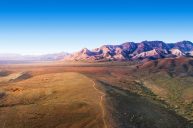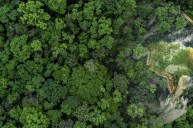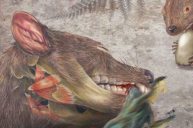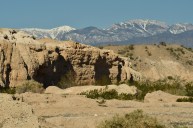A Florida diver made quite the geological discovery when diving off the coast. He discovered a fossil that could be millions of years old.
Alex Lundberg, a marine biology major at the University of South Florida, said that he found an ancient mastodon tusk. He was actively searching for fossils off Manasota Key. The dive spot is located around Tampa. The diver made his prehistoric find back in April, but news of his discovery is just spreading.
Researchers haven't dated the artifact, but they believe it could be millions of years old. It's just the latest accomplishment for the fossil hunter. According to the New York Post, he's been fossil hunting since he was "old enough to walk."
"My dad would take us out to construction sites all the time to look for fossils as a kid," Lundberg explained. "Finding small pieces and chunks of tusk is common, but finding one this large and well-preserved is very rare."
Fossil Stretches Back Potentially Millions Of Years
For those wanting to get into fossil hunting, Lundberg says to get a permit and remember to practice care when searching. "My best tip is to get out and explore and keep your head down," he said. "This stuff is out there and all over the state."
What makes the find so astonishing is that tusks are typically degradable. He explained, "Tusks found in Florida are normally very delicate and usually crumble apart." American Mastodons officially went extinct around 10,500 years ago. These creatures once roamed across North and South America. However, mastodons were not the same as mammoths. However, they rivaled the creatures in stature.
"Although the mastodon has been around since [4 to 3 million years ago], mammoths didn't arrive in North America until much later, during the Pleistocene ice ages," the NPS's website reads. That era stretched from 2.6 million years ago to 11,700 years ago. "Mastodons did co-exist in many places with mammoths, but all of North America's proboscideans went extinct by around 10,500 years ago."
Lundberg said that he plans to keep the artifact for now. "I plan on keeping it, but I do have to report it at the end of the year to the Florida Museum of Natural History," he said. "If they deem it scientifically important, I have to donate it, but that is very unlikely."




